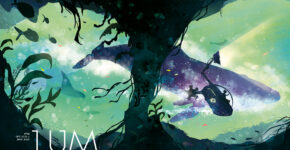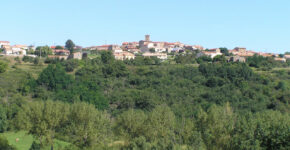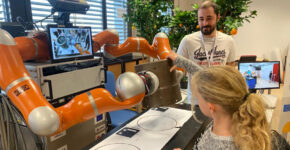
[LUM#18] An ocean of research
Published on: November 08, 2022
The eighteenth issue of Lum magazine plunges you into the oceans, a vast field of...

When reindustrialization and coopetition go hand in hand in the world of sports shoes
Published on: November 03, 2022
850 million euros - that's how much the French government has decided to spend...

Covid-19: An unpredictable winter under the seal of Omicron's massive and unprecedented diversification
Published on: November 02, 2022
Mircea T. Sofonea, University of Montpellier and Samuel Alizon, Centre national de la recherche...

[LUM#16] Before the Flood
Published on: October 31, 2022
For want of being able to anticipate them, almost every year the Cevennes storms that hit...

Support for IEP research: 35 projects selected
Published on: October 27, 2022
Since 2017, the UM's I-SITE excellence program has supported research to the tune of 20.8...

Raoul Belzeaux, an untroubled bidisciplinarity

30 years of innovation with LIRMM
Published on: October 25, 2022
Founded in 1992, the laboratory for computer science, robotics and microelectronics at...

A l'UM la science [S02-ep05]: From invasive fish to the sensory analysis stage
Published on: October 20, 2022
This week on A l'UM la science, Isem researcher Rodolphe Gozlan talks about the...

A l'UM la science [S02-ep04]: From toads to the 3D pro platform
Published on: October 20, 2022
This week on A l'UM la science, CEFE researcher Aurélien Besnard talks about the...

Libraries and documentation

Coopetition: the key to French and European success in space
Published on: October 13, 2022
On Sunday, September 18, 2022, at the 73rd International Astronomical Congress, the first...

Hidden price hikes: how do consumers react?
Published on: October 13, 2022
We are currently witnessing a generalized surge in consumer prices which...

[LUM#17] Innovating for biodiversity with Qualinoa
Published on: October 11, 2022
"Biodiversity and health for our food" is the motto of Didier...

A l'UM la science [S02-ep03]: From harbour fauna to the Fête de la science
Published on: October 06, 2022
This week on A l'UM la science, ISEM researcher Nicolas Bierne talks about...

Call for projects Relation Science-société - I-Site excellence program
Published on: October 05, 2022
As part of the I-SITE Excellence Program, the University of Montpellier is launching a call for...

A l'UM la science [S02-ep02]: From the epitranscriptome to the cancer exhibition
Published on: October 03, 2022
This week on A LUM la science we talk to Alexandre David, a biologist at the IGF, and Eric...